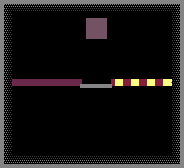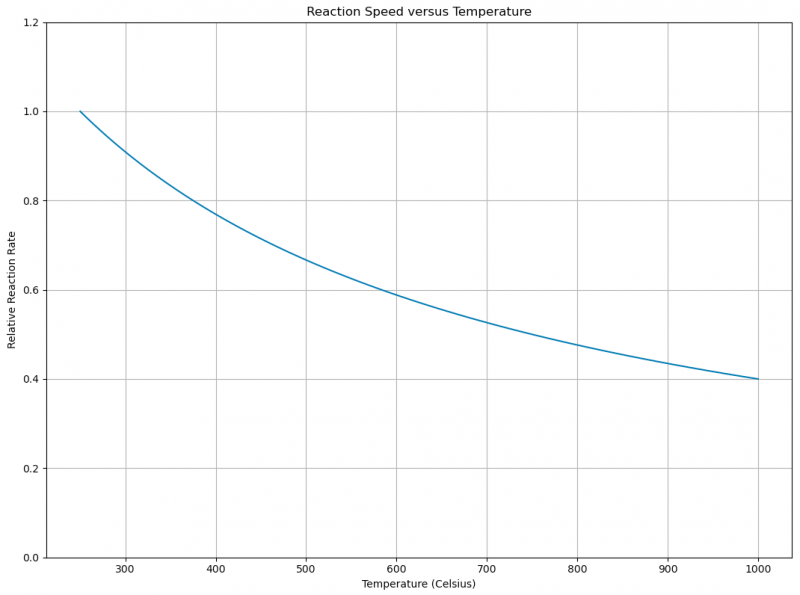Difference between revisions of "Element:BRMT"
(Element buttons shouldn't be used in the main text, remove a redundant ctype declaration, make reaction speed table horizontal) |
ArolaunTech (talk | contribs) m (Replaced table with image) |
||
| Line 70: | Line 70: | ||
The reaction becomes slower when heated, see the table below (notice that {{Temperature|t=1273}} is broken metal melting point): | The reaction becomes slower when heated, see the table below (notice that {{Temperature|t=1273}} is broken metal melting point): | ||
| − | + | [[File:BRMT+BREL THRM rategraph.png|800px]] | |
| − | |||
| − | |||
| − | |||
| − | |||
| − | |||
| − | |||
| − | |||
| − | |||
| − | |||
| − | |||
| − | |||
| − | |||
| − | |||
| − | |||
| − | |||
| − | |||
| − | |||
| − | |||
| − | |||
| − | |||
| − | |||
| − | |||
| − | |||
| − | |||
| − | | | ||
Latest revision as of 23:33, 7 June 2022
 Created when iron rusts or when when metals break from pressure. | |
| Properties | |
|---|---|
| Section | Powders |
| Spawn temperature | 22°C |
| Heat Conductivity | 84.4% |
| Relative weight | 90 |
| Gravity | 0.3 |
| Acid dissolve rate | 0.2% |
| Flammability | 0 |
| State | Powder |
| Transitions | |
| High temperature | transition occurs above 999.85°C |
| Misc properties | |
| Conducts electricity (SPRK) | |
| Source code | |
Broken metal is a heavy conductive powder which is formed when breakable metal is exposed to pressures above 1 (when its tmp is 1) or 2.5 (otherwise). Broken metal usually melts under 999.85°C into molten breakable metal, but if it has a ctype of tungsten, it melts under 3421.85°C into molten tungsten.
Creation
Tungsten breaks into broken metal with ctype TUNG if it experiences pressure differences higher than 32. Breakable metal, pipe and wifi break into broken metal when pressure is higher than 2.5, 10 and 15, respectively.
Damage particles turn breakable metal into broken metal even with heat and air simulations disabled:
Same for tungsten, but the resulting broken metal has ctype TUNG:
Breakable metal with tmp value 1 decomposes into broken metal by itself with time. This kind of breakable metal can be obtained when iron rusts on contact with water, resulting in the following reaction:
Molten rock under pressure between 25 and 50 may randomly turn into molten broken metal:
Oxygen may fuse into broken metal under temperature above 9700°C, pressure above 250 and gravity above 20, although the resulting broken metal is often instantly melted into breakable metal.
Reactions
Broken metal and broken electronics may produce thermite on contact (either of the particles turns into thermite at random) when temperature is above 250°C:
The reaction becomes slower when heated, see the table below (notice that 999.85°C is broken metal melting point):
| Language: | English |
|---|
